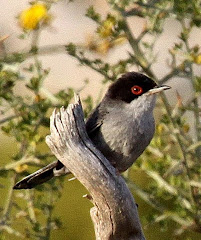

September 26, 2011:
A nice surprise for a Monday morning was that the Buff-breasted Sandpiper reported from the Kent estuary at Arnide the previous day was still present. The bird was beyond the far edge of the salt-marsh and about 600 metres from the shore-line proper, feeding on a mud-bank recently exposed by the falling tide. Unfortunately soft deep mud and several still-flooded dykes meant that it could only be viewed from a distance which was never within 100 metres and often much further.




This is a bird which nests in the high arctic of Alaska and northern Canada. A minor migration route to the main wintering grounds in South America runs down the east coast of the USA. Presumably the relatively large number of these sandpipers, normally very rare in Britain, which have been reported during the past week or so (an unprecedented 26 were seen at one site in Ireland today) are probably those forced eastwards during the recent American hurricane. They are a very welcome bonus of the bad weather.





















.jpg)



